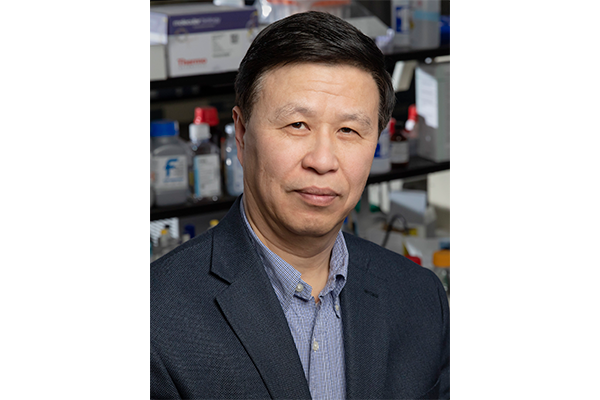Patented Molecule That Eliminates Cancer Cells Commercialized

A patented anti-cancer molecule, invented by Ning Wang, BioE professor and director of the Institute for Mechanobiology, and three collaborators, is being replicated and commercialized as a research product by several companies, marking a significant advancement that validates the invention.
A patented anti-cancer molecule, invented by Ning Wang, professor of bioengineering and director of the Institute for Mechanobiology, and three collaborators, is being replicated and commercialized as a research product by several companies, marking a significant advancement that validates the invention.
Wang and his co-inventors, Biao Yu and Xin Cao, professors of chemistry at the Shanghai Institute of Organic Chemistry, and Junwei Chen, professor of bioengineering at Huazhong University of Science and Technology, received a patent for the synthetic molecule, known as WYC-209, in 2020. The work underway now in industry could lead to pre-clinical investigations and eventually clinical trials, Wang says.
The patent, “Retinoid compound, preparation method therefor, intermediates thereof and application thereof” represents several years of research. In 2018, the team’s research findings, “Inhibition of Cancer Stem Cell Like Cells by a Synthetic Retinoid” were published in Nature Communications. That same year, the team applied for a U.S. patent.
Wang says the concepting and initial discoveries for this research go back to 2012. Initially, he focused on understanding the attributes and behaviors of a tiny number of cancer cells that could resist conventional drug treatment. He determined that these cells not only lived while other cancer cells died, but they were fast growing, a fact he relates to the drug resistance and then the metastasis process when cancer cells develop in other parts of the body from where they were originally formed.
WYC-209 extinguishes the cancer cells when they bind to the retinoic acid receptor within the cell and induce apoptosis, or death. Retinoic acid is made in the body from vitamin A and helps cells grow and develop. Retinoic acids are used as treatments for some cancers, although they can produce adverse side effects.
A decade ago, “we thought about how to design a molecule that has similar functionality to retinoic acid but did not have side effects or toxicity,” Wang says.
The research team constructed dozens of molecule variations before creating WYC-209. “Some molecules just don’t work,” Wang notes. Eventually, WYC-209 was tested using both a 3-D in vitro cancer model and in vivo mice melanoma model. In those environments, the molecule effectively eliminated the more resistant metastatic cancer cells with minimal toxicity that would create adverse side effects. Wang says the molecule’s rigid structure limits its flexibility, which in turn reduces the possibility of toxicity development.
The organizations currently exploring the capabilities of WYC-209 are MilliporeSigma, MedChemExpress, AdooQ Bioscience, and MedKoo Biosciences.